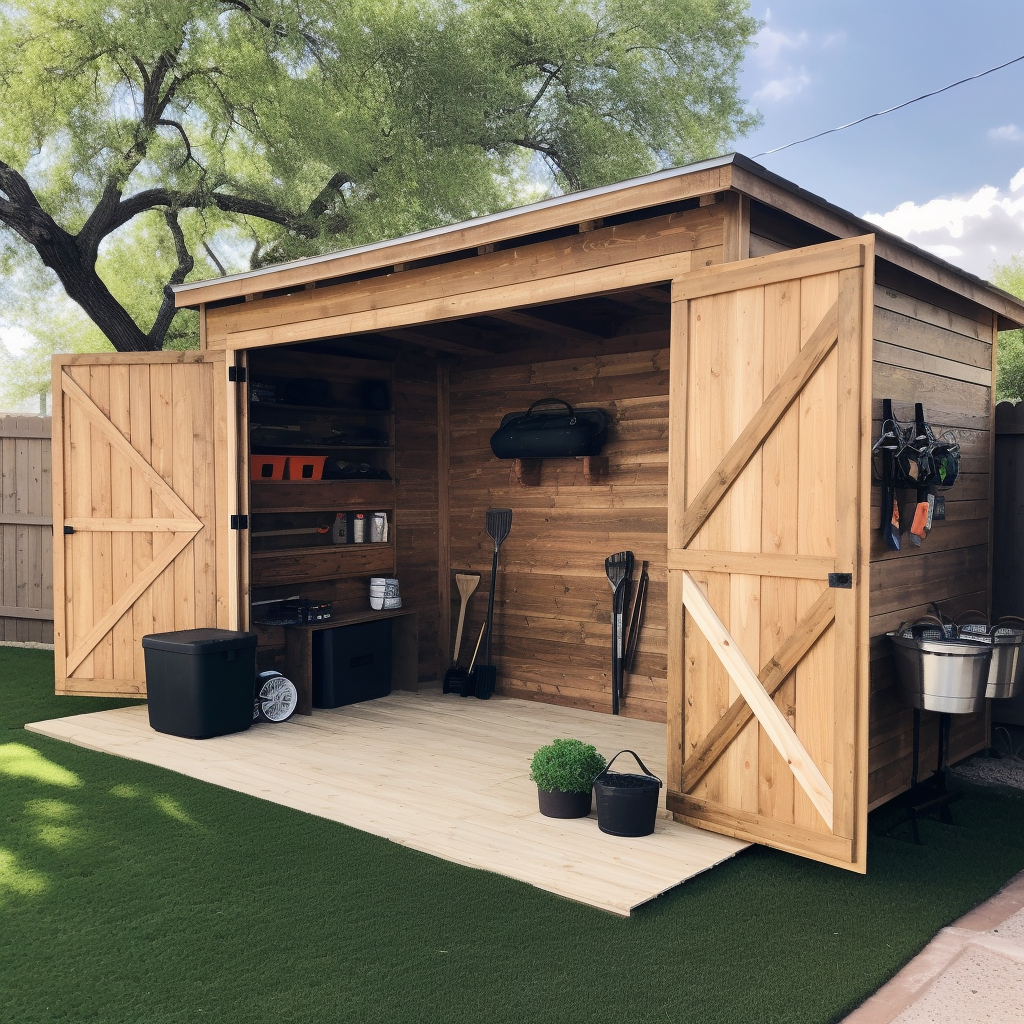
So, you've finally decided to tackle that ever-growing pile of "stuff" that's taking over your garage (or worse, your living room!). A storage shed is the answer, but with so many options out there, how do you even begin to choose the right one? Don't worry, we've got you covered!
First things first, let's talk about shed plans. Buying pre-made plans is like having a blueprint for success. It saves you tons of time and frustration compared to designing everything yourself. Think of it as having a seasoned carpenter whisper helpful tips in your ear throughout the whole process.
But with so many plans available, how do you find the perfect one? It's all about asking the right questions and considering your specific needs. Let's dive in!
Step 1: Size Matters (Seriously!)
This is the first and most crucial step. You need to figure out exactly how much space you need. Don't underestimate your belongings! Think about everything you'll be storing: lawnmower, garden tools, bikes, camping gear, kayaks, winter gear... you get the picture!
Here are some tips for determining the right size:
Measure It Out: Take accurate measurements of everything you'll be storing. Don't forget to factor in any large items like furniture or appliances.
Consider Future Growth: Think about your storage needs in the next few years. Do you plan on expanding your collection? A little extra space now might save you a headache later.
Plan for Access: Think about how you'll be accessing your items. Do you need wide doors for a riding lawnmower? Will you need shelves or other storage solutions? These factors can influence your floor plan and overall size.
Step 2: Choosing the Style (The "Look" of Your Shed)
Now that you've got the size figured out, it's time to think about aesthetics. Do you want a traditional shed that blends seamlessly with your backyard? Or are you going for a modern look with sleek lines and contemporary materials?
Here are some popular shed styles to consider:
The Classic: A simple gable roof with a single door is the most common and often the most budget-friendly option.
The Dutch Gable: This charming style features a smaller gable roof that adds character and visual appeal.
The Gambrel: With its steep slope, this design offers extra headroom and storage space, making it perfect for taller items.
The Lean-To: This simple, cost-effective design is great for smaller projects or storing tools.
Remember, your chosen style should complement your home and the surrounding landscape.
Step 3: Materials Matter (Strength, Durability, and Aesthetics)
The materials you choose for your shed will directly impact its longevity and overall appeal. Here are some popular options:
Wood: Traditional and affordable, wood offers versatility in design and can be stained or painted to match your preferences.
Metal: Known for its durability and low maintenance, metal sheds are resistant to rust and insect damage. They also come in various colors and styles.
Vinyl: A popular choice for its weather resistance, vinyl sheds are virtually maintenance-free and come in a wide range of colors.
Hybrids: Some shed plans offer a combination of materials, like a wooden frame with metal siding. This can combine the best qualities of each material.
Think about the climate you live in and your budget when selecting the materials.
Step 4: Features: The Bells and Whistles
Shed plans come with different features that can add functionality and convenience. Here are some extras to consider:
Windows: Allow natural light to brighten up your storage space and create a more inviting atmosphere.
Doors: Single doors are standard, but you might need double doors for larger items. Consider the location and placement for easy access.
Flooring: A concrete floor offers durability, while a wooden floor can be warmer and more comfortable.
Electrical Outlets: If you plan on using the shed for workshops or hobbies, consider adding electrical outlets.
Ventilation: Adequate ventilation is essential for preventing moisture buildup and mold.
Think about how you'll be using the shed and what features would make your life easier.
Step 5: Choosing the Right Plans for You
Now that you've considered size, style, materials, and features, it's time to choose the perfect plans. There are several great resources available online and at your local home improvement store.
Here are some tips for choosing the right plans:
Read Reviews: Check out online reviews to see what other builders have said about the plans.
Look for Detailed Instructions: The plans should include step-by-step instructions, materials lists, and diagrams.
Consider Your Skill Level: If you're a beginner, choose plans that are clearly explained and have plenty of visual aids.
Seek Professional Help: Don't hesitate to consult a professional builder or contractor if you have questions or need guidance.
Don't Forget the Extras:
Once you've found the perfect plans, remember to factor in the cost of materials, tools, and any additional labor you might need. You can also add your personal touch with landscaping or a custom paint job.
Conclusion:
Choosing the right storage shed plans is a big decision, but it doesn't have to be overwhelming. By taking your time, asking the right questions, and considering your specific needs, you can find the perfect shed that's both functional and visually appealing.
Remember, this is an investment in your home and your peace of mind! Enjoy the process, and happy building!
No comments:
Post a Comment